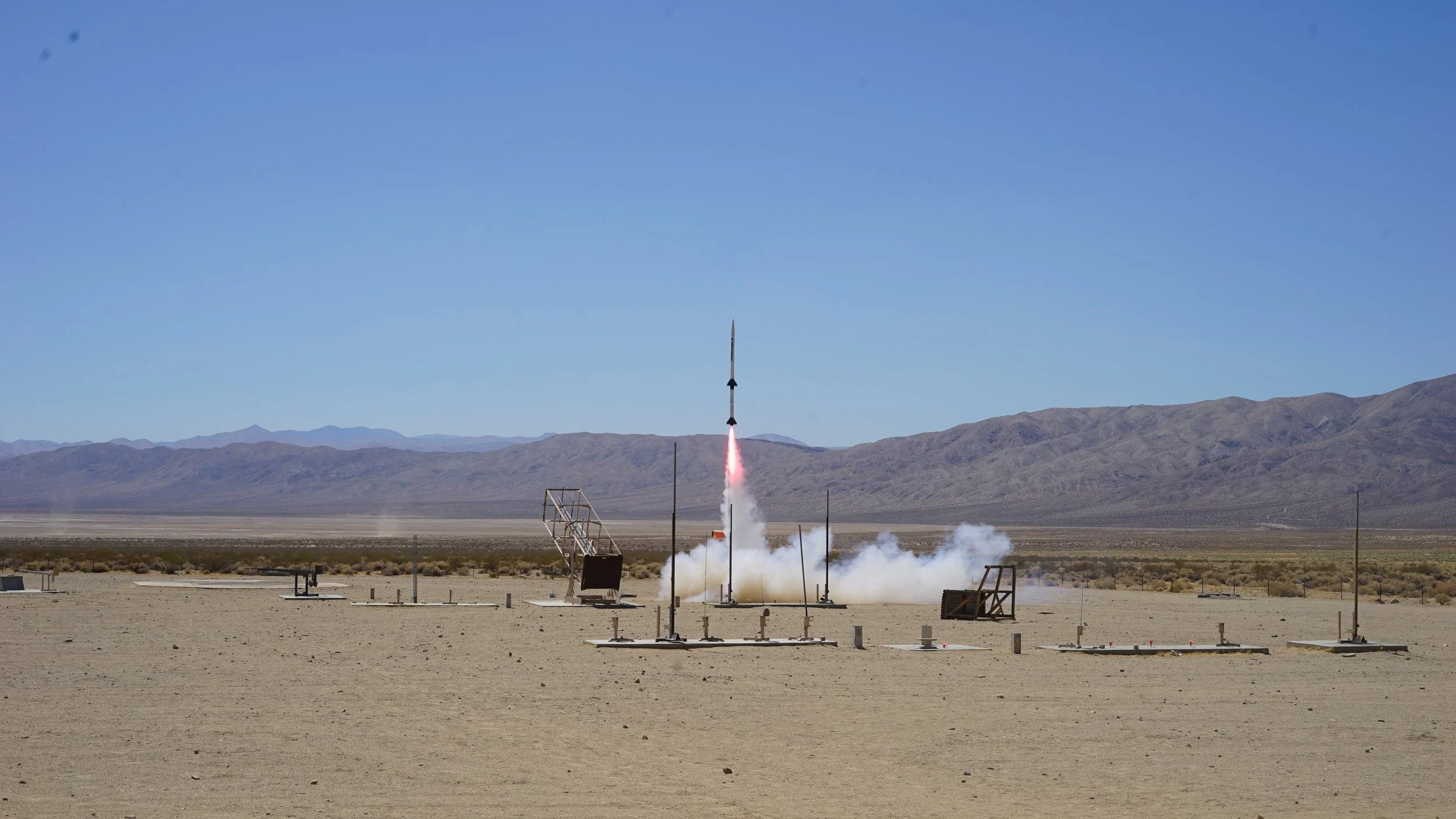
2025 FAR-Unlimited Competition
June 6th - June 8th, 2025 | Mojave Desert, California
What is FAR?
FAR stands for Friends of Amateur Rocketry and is an organization that provides individuals and teams a facility where they can launch the rockets they have been working on. FAR’s goal is to “educate the public in STEM through the use of amateur rocketry.”
FAR Competitions
FAR-Unlimited
The FAR-Unlimited is a rocketry competition that is open to any motor, commercial or experimental. This competition must launch the rocket to an apogees of 5,000ft; 10,000ft; and 25,000ft carrying a payload. There are multiple payload options, providing the team with more points for each one achieved.
FAR-OUT
The FAR-OUT (Oxidizers Uninhibited Tournament) competition, is a launch rocketry competition for rockets with hybrid and liquid rocket motors. This competition has apogee groupings of 5,000-10,000ft; 20,000-40,000ft; and 50,000-100,000ft.
FAR-51025
The FAR-51025 is a rocketry competition that is open to any motor, commercial or experimental. This competition must launch the rocket to an apogees of 5,000ft; 10,000ft; and 25,000ft carrying a payload. There are multiple payload options, providing the team with more points for each one achieved.
FAR-DPF
The FAR-DPF or Dollar Per Foot Challenge is open to US and Canadian Colleges and Universities. The challenge is for single stage, liquid propellant rockets only. The rocket must launch and land safely with only minor damages. The team will receive $1 for every foot of altitude above the end of the launch rail. Teams that have attempted so far achieved altitudes ranging from 4,000ft to 23,000ft.
FAR-MARS
The FAR-MARS Launch Contest is a $100,000 prize contest held jointly by the Mars Society and FAR. The prize is split into two, one for a bi-propellant liquid-fueled rocket, and another for liquid-methane liquid-oxygen rocket. Both with the goal of reaching 45,000ft apogee.
2025 FAR-Unlimited Competition
When:
June 6th - June 8th, 2025
Where:
The FAR Launch Site in the Mojave Desert, California.
Competition Scoring & Requirements:
The rocket must carry a removable 2.2-lb (1 kg) payload in a minimum 3” (75 mm) airframe, with options for avionics, video, and telemetry. It requires redundant systems for motor ignition, ejection, and altitude verification, and must deploy the main parachute between 500’–1500’ AGL, keeping descent speeds under 100 ft/sec. A tracking system is mandatory, and the motor must meet a minimum K-impulse (1,280 N-sec) requirement. An OpenRocket file is due by May 18, 2025. The design should also include a section that safely carries and releases 500 ml of water at apogee for ballast testing.
Launch Day
The launch day begins with a check in and inspection on either the night of June 6th or the morning of June 7th. At the check in the rocket will be inspected to make sure safety standards are met, the specification sheet, pre-flight checklist, and the launch checklist is checked. Passing this inspection will result in the team receiving a flight card. The launch of the rockets will occur on Saturday, June 7th between 8am and 6pm or Sunday, June 8th between 9am and 3pm. Teams are allowed 30 minutes on the launch pad for solid motors, and 1 hour for hybrid or bi-prop motors. Once the flight is complete the team must recover the rocket to check the condition, and report to a post flight inspection where inspectors will check the measured altitude and calculate a score.

